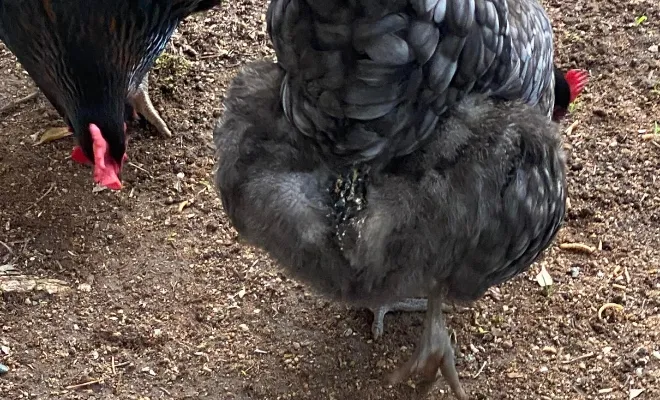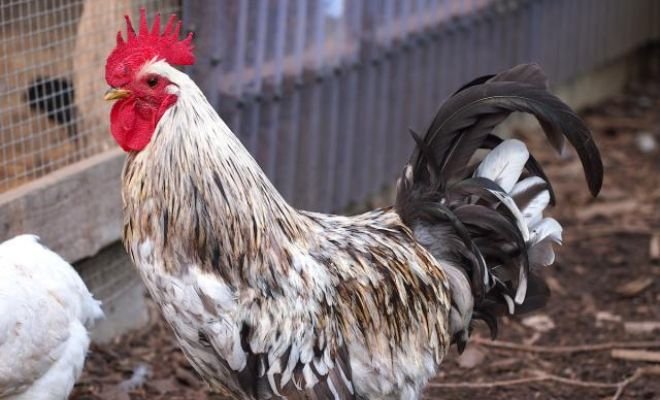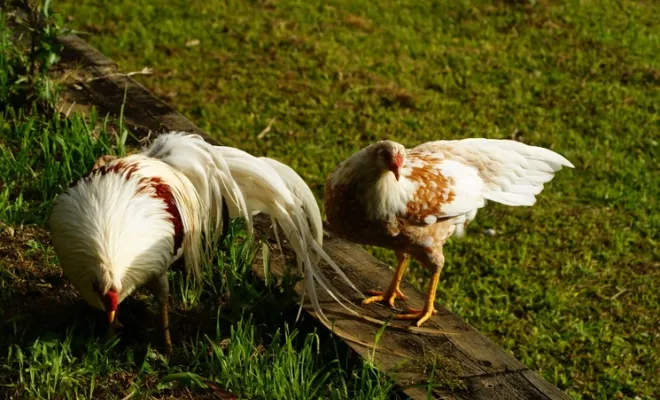19 High-Protein Chickens Treat Alternatives of Layer Feed!

Traditional layer feed may not always meet the high protein needs of your flock. Looking for alternative high-protein options can ensure your chickens are healthy and productive.
The tension comes as you don’t know about any high-protein chicken feed options to replace layer feed! But we’ve got you covered! You can choose layer feed alternatives like mealworms, fish meals, soybeans, peas, lupins, alfalfa, sunflower seeds, and more. These foods lead to better egg production and overall well-being.
Switching to high-protein feeds requires some knowledge. This guide will help you understand the benefits and how to incorporate these feeds. So, let’s get started!
Table of Contents
A Quick Table of 19 Common High-Protein Chickens Treat Alternatives of Layer Feed
It’s essential to formulate a balanced and complete feed to meet the specific nutritional requirements of your chickens. But what protein-rich foods are available except for the layer feeds? Check out the list!
| Feed Ingredient | Crude Protein Content (%) |
|---|---|
| Fish Meal | 66 |
| Corn Gluten Meal | 62.5 |
| Meat and Bone Meal | 52.5 |
| Peanut Meal | 49 |
| Soybean Meal | 46.5 |
| Sesame Meal | 46 |
| Cottonseed Meal | 43 |
| Canola Meal | 36 |
| Rapeseed Meal | 36 |
| Lupins | 33 |
| Sunflower Meal | 32 |
| DDGS (Distillers Dried Grains with Solubles) | 28 |
| Dried Brewers Grains | 27.5 |
| Hemp Seed Meal | 27.5 |
| Lentils | 26 |
| Peas | 24 |
| Flaxseed Meal | 23 |
| Alfalfa Meal | 17.5 |
| Quinoa, Wheat/Rice Bran, Oats, Millet | 11 to 17 |
19 High Protein Chicken Feed Options to Replace Layer Feed
It’s true that you cannot easily beat layer feed when looking into other high-protein chicken feed. But I have listed the most protein-rich feed for your backyard flocks! I bet some of the feed will beat the layer feed for chickens.
- Fish Meal: Fish meal is a top animal-based protein source. It provides a complete amino acid profile, better than plant-based feeds. Its high digestibility and taste ensure your chickens get the nutrients they need, boosting egg production and overall health.
- Corn Gluten Meal: With 60-65% protein, corn gluten meal has much more protein than layer feed. Its balanced amino acids improve egg production and feather quality. It’s a great alternative.
- Meat and Bone Meal: This animal byproduct offers high-quality protein and minerals like calcium and phosphorus. These are crucial for strong eggshells and bone health, making it a superior option to plant-based feeds.
- Peanut Meal: Peanut meal has more protein than most layer feeds. It also has a rich amino acid profile and excellent taste. Its high nutrient density supports better egg production and overall performance.
- Soybean Meal: Soybean meal is widely used in poultry diets. It has higher protein content and better amino acid balance than layer feed, making it efficient for supporting egg production and growth.
- Sesame Meal: With 42-50% protein, sesame meal is a concentrated plant-based protein source. It can replace or complement layer feed, providing a more nutrient-dense diet for your chickens.
- Cottonseed Meal: This cost-effective byproduct offers 41-45% protein, higher than layer feed. It’s an economical and efficient alternative.
- Canola Meal: Canola meal, with 34-38% protein, is becoming popular. It offers a concentrated source of essential nutrients for egg production.
- Rapeseed Meal: Similar to a canola meal, rapeseed meal provides 34-38% protein. It ensures efficient nutrient delivery to laying hens.
- Lupins: Dehulled lupin seeds offer 28-38% protein. They surpass the protein levels found in typical layer feeds, offering a more nutrient-dense option.
- Sunflower Meal: Although not as high in protein as some other options, sunflower meal’s 28-36% protein content still outperforms layer feed. It’s a viable option for increasing overall protein density.
- DDGS (Distillers Dried Grains with Solubles): This ethanol byproduct provides 26-30% protein. It’s a cost-effective and sustainable alternative to conventional layer feed.
- Dried Brewers Grains: With 26-29% protein, dried brewers grains offer higher protein density than layer feed, ensuring efficient nutrient utilization.
- Hemp Seed Meal: Hemp seed meal has 25-30% protein. It can be a valuable addition to layer feed, increasing overall protein density and nutrient profile.
- Lentils and Peas: These legumes contain 23-28% protein. They are excellent plant-based protein sources, outperforming the protein levels in many layer feeds.
- Flaxseed Meal: Providing 22-24% protein, flaxseed meal can increase the overall protein density of layer feed and offer additional nutritional benefits.
- Alfalfa Meal: Dehydrated alfalfa meal has 17-22% protein. It can be a useful supplementary protein source when combined with layer feed.
- Quinoa: While lower in protein than some alternatives, quinoa’s 14-18% protein content can still help increase the overall protein density of layer feed.
- Wheat Bran, Rice Bran, Oats, and Millet: These ingredients have lower protein levels (11-17%). However, they can be included in layer feed formulations to add variety and contribute to the overall protein and nutrient content.
Related Reads:
8 Considerations When Replacing Layer Feed for Chickens
When replacing traditional layer feed with high-protein alternatives, there are key factors to consider. let me make it easier for you!
- Nutrient Balance: Ensure the diet remains balanced with essential nutrients like energy, vitamins, and minerals. An imbalance can affect egg production and bird health.
- Amino Acid Profile: Protein quality depends on its amino acid profile. Some plant-based sources may lack essential amino acids. You might need to combine different sources or use synthetic amino acids.
- Digestibility and Availability: Not all proteins are equally digestible. Factors like fiber content and processing methods impact bioavailability. Choose sources that ensure adequate nutrient absorption.
- Palatability and Feed Intake: Some protein sources may be less palatable, reducing feed intake. Gradually introduce new feeds and monitor consumption to meet nutritional needs.
- Cost and Availability: Some alternatives are more cost-effective, but others might be expensive or hard to find. Consider the long-term sustainability and cost-effectiveness of the protein sources you choose.
- Processing and Storage: Different proteins may need specific processing or storage methods for chickens. Proper handling is crucial to maintain nutritional value and quality.
- Potential Anti-Nutritional Factors: Some plant-based proteins contain anti-nutritional factors. These things affect nutrient absorption or poultry health. Proper processing or supplementation can help mitigate these issues.
- Environmental and Sustainability Considerations: Using byproducts or alternative proteins can make poultry production more sustainable. It reduces waste and diversifies feed sources.
Want to get more information about protein chicken feed alternatives to replace layer feed? Here’s a video for you!
FAQs
Want to know more about protein for your chickens? Learn from the following queries!
Q. How much protein do chickens need?
A. Laying hens typically need around 16-18% protein in their diet for optimal egg production.
Q. Is 20% protein too much for laying hens?
A: Generally no, but consult a vet if concerned about long-term use.
Q. What protein feed should I offer my chickens to help them through a moult?
A: Consider offering a feed with 18-20% protein or supplement their diet with mealworms or black oil sunflower seeds.
Q. Are there any risks to using high-protein feed?
A. While protein is important, too much can strain a chicken’s kidneys or lead to obesity. It’s crucial to maintain a balanced diet with other nutrients.
Final Word
Ensuring your chickens receive a high-protein diet is key to keeping them healthy and productive. While traditional layer feed is healthier, there’s a range of alternative protein sources to explore. From fish meal to soybean meal, these options offer superior protein levels you can’t even imagine!
Yet, transitioning to alternative protein sources requires careful consideration. You must weigh factors like nutrient balance, digestibility, and cost. Consulting with an animal nutritionist or poultry specialist can provide valuable guidance in formulating a balanced diet.






